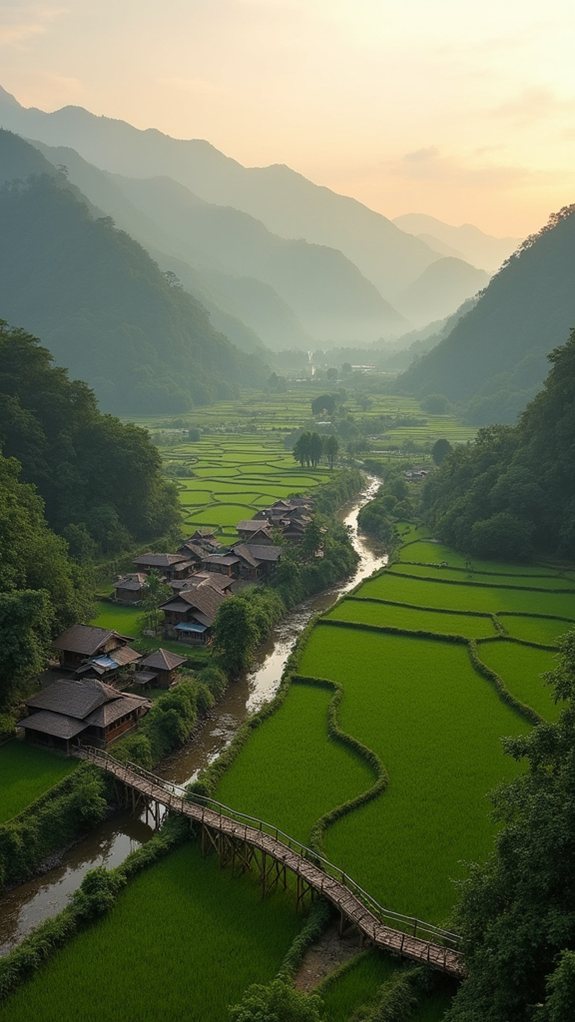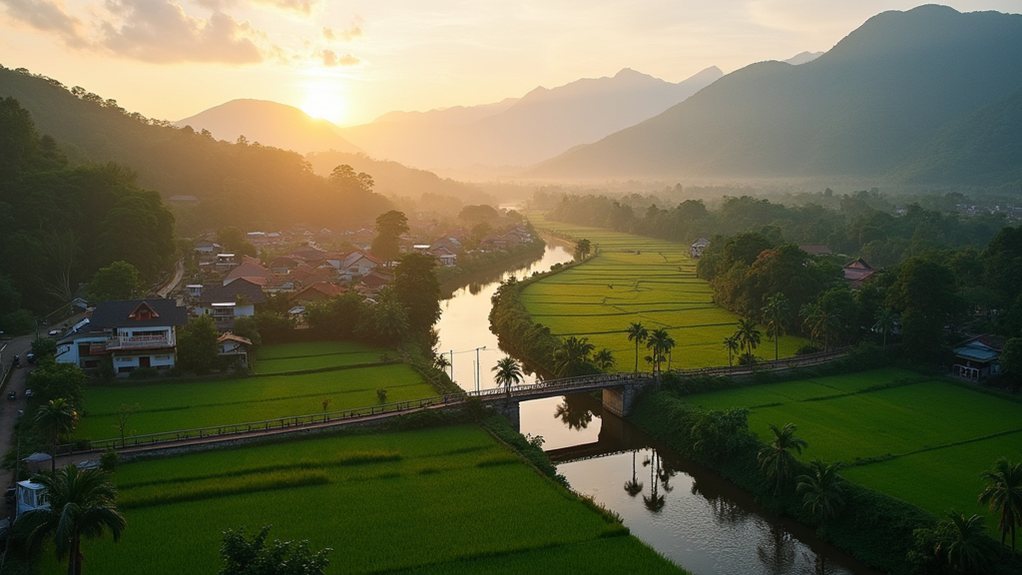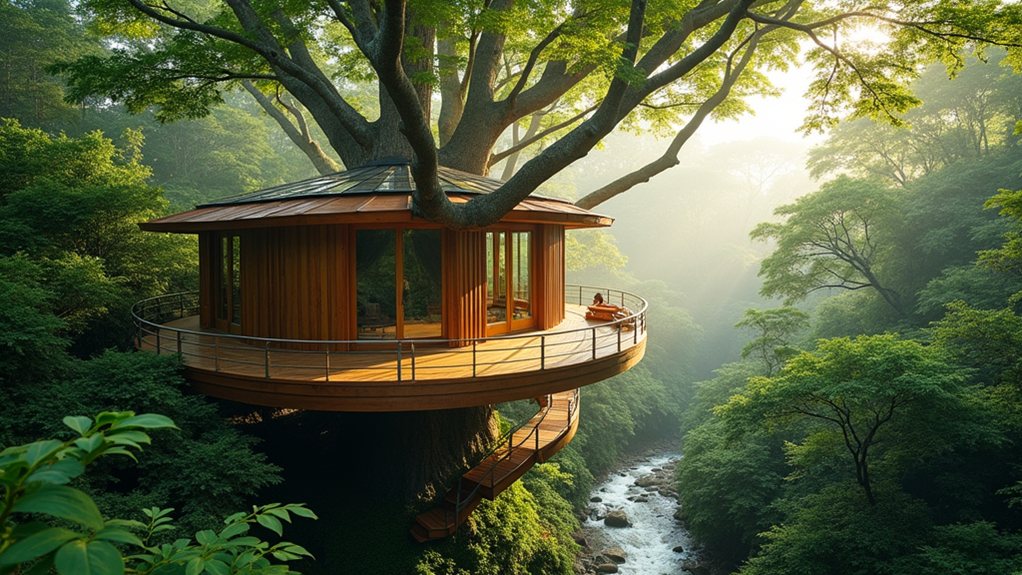Pai, Thailand’s best-kept secret, sits tucked away in northern mountain valleys where the air hangs sweet with lemongrass and tradition. It’s not on typical tourist itineraries, yet travelers who stumble upon this 800-year-old haven often extend their stays from planned days to spontaneous weeks. The town blends Thai, Chinese, and Shan cultures into a laid-back atmosphere where farmers’ morning routines mix with backpackers’ yoga sessions. What makes locals smile knowingly when visitors say they’ll “just pass through”?
A Mountain Sanctuary With Ancient Cultural Roots

Situated in the emerald mountains of northern Thailand, Pai has transformed from a sleepy village into a traveler’s haven without losing its serene charm. Cradled at 500 meters above sea level and approximately 146 kilometers northwest of Chiang Mai, this idyllic town is surrounded by verdant valleys and defined by the gentle flow of the Pai River, offering visitors an escape from Thailand’s bustling cities. Much like Forest Park in Queens, Pai provides a tranquil retreat that feels worlds away from urban life despite its accessibility.
Nestled high in Thailand’s northern mountains, Pai beckons travelers with its peaceful valleys and riverside tranquility.
The region boasts over 5,000 years of human habitation, with the town itself claiming some 800 years of rich history. Cultural influences from nearby Myanmar and China are evident in landmarks like Wat Nam Hu, a proof of the area’s complex past marked by cross-border conflicts.
The surrounding hills are home to diverse tribal communities including the Karen, Hmong, Lisu, and Lahu peoples, creating a tapestry of traditions that color local markets and festivals. The authentic cultural immersion available here offers travelers a genuine glimpse into traditional Thai life rarely found in more commercialized destinations.
Adventure seekers flock to Pai’s natural wonders, including the dramatic Pai Canyon, invigorating Mo Paeng Waterfall, and therapeutic Pam Bok Hot Springs. For those craving panoramic views, Yun Lai Viewpoint offers breathtaking vistas of the valley below, while adrenaline junkies can partake in white water rafting and trekking expeditions through the lush countryside.
With over 350 guesthouses and hotels, Pai has developed the infrastructure to welcome its growing popularity while maintaining its laid-back atmosphere that attracts artists, musicians, and free spirits. The town’s famous 800-meter bamboo bridge provides visitors with spectacular views of surrounding rice fields, becoming a favorite spot for photographers and nature lovers alike.
The town’s economy, once primarily agricultural, now thrives on tourism with weekly markets, like the vibrant Wednesday Market, serving as hubs of cultural exchange. Every evening at 5:00 PM, two main streets transform into a vibrant Walking Street market where visitors can sample affordable Thai cuisine and browse local crafts.
Despite modern conveniences like 7-Elevens, Pai retains its hippie ethos, where time seems to slow down and visitors are invited to welcome the gentle rhythm of mountain life—a rhythm that continues to be shared primarily through the enthusiastic recommendations of those who’ve experienced its magic.








